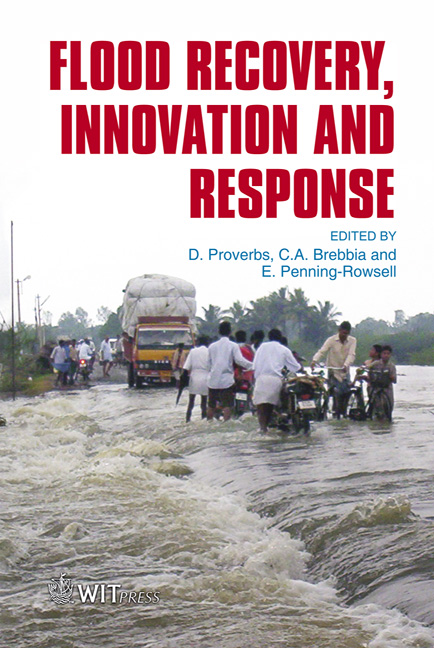Urban Flood Control Policy For Sustainability Under Global Warming In Japan
Price
Free (open access)
Transaction
Volume
118
Pages
10
Page Range
273 - 282
Published
2008
Size
864 kb
Paper DOI
10.2495/FRIAR080261
Copyright
WIT Press
Author(s)
Y. Kawata
Abstract
Under rapid urbanization, any conventional flood control measure is no longer sufficient for class-A rivers in Japan. In answer to this problem, the construction of high specification levees (super levees) began in 1987, initially along especially important class-A rivers. This construction method involves restricting the slope on the city side of the levee to a gentle gradient of approximately 1/40 so as to prevent the levee from breaking when flood water flows over the levee. Meanwhile, smaller rivers, known as urban rivers, have been the subject of a method of dealing with urban water disasters using comprehensive flood control strategies that were adopted at the end of the 1970s. After witnessing incidents of localized torrential rain throughout the nation caused by global warming since around 1995, it was clear that changes needed to be made to these flood control measures. Changes were necessary because the rainfall was so extreme that in many cases inundation inside the levee and by river water began occurring simultaneously, and because the inundation of both cities and rivers increased in scale. Of particular concern was the possibility of flooding in urban areas leading to the flooding of subterranean spaces. The \“Urban Rivers Anti-Flood Measure Act” was implemented in April 2004 in response to the frequent occurrence of this kind of urban flooding with the aim of reducing flood damage in urban areas. Keywords: urban flooding, urban river, torrential rain, global warming, urban flood control, disaster management, disaster reduction strategy.
Keywords
urban flooding, urban river, torrential rain, global warming, urban flood control, disaster management, disaster reduction strategy.





